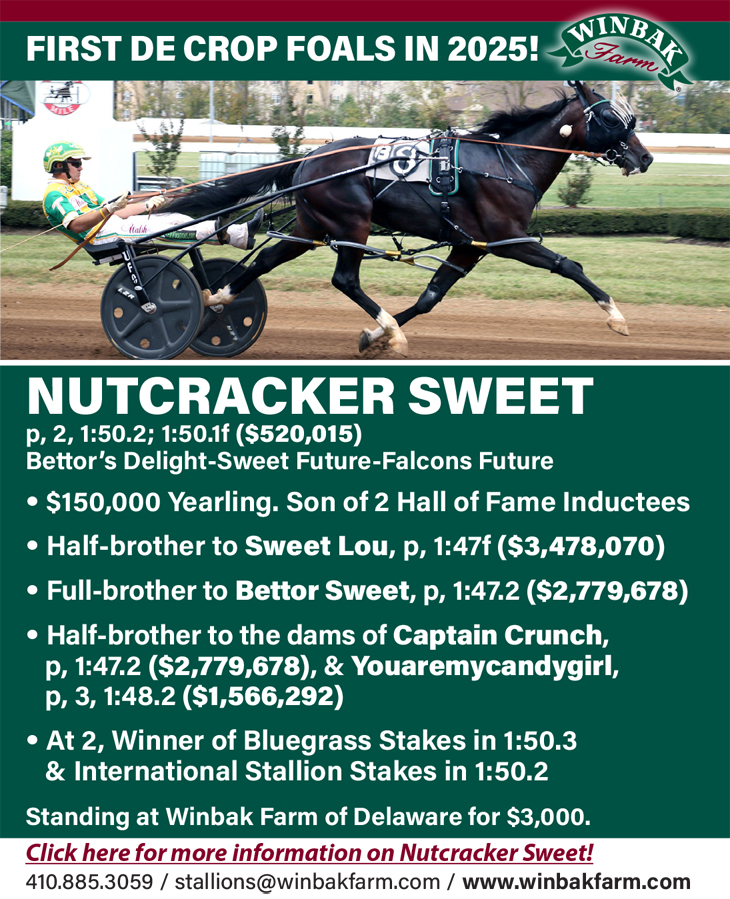Jackpot Hi-5 Strategies: Chaos reigns
Veteran handicapper outlines his strategy for trying to hit a Jackpot Hi-5 such as the one in race 12 tonight at Mohawk featuring nearly $1 million in carryover money.
by Frank Cotolo
The Jackpot Hi-5, no matter the size of the pot at any given time, demands more from a player than does any other single- or multi-race exotic. Simply, no other wager insists on choosing as many losers in league with a winner. No other wager asks for more losers than winners. Four losers must partner with a winner in their exact order of finish for a ticket to be correct. A strategy to hit a Jackpot Hi-5 — such as the one on the line tonight at Mohawk in Race 12 that starts with nearly $1 million in carryover money — then comes with this caveat: Bettors beware, chaos rules.
In essence, a most-likely winner of a race in any exotic-wagering pool is a mathematical cinch compared to pinpointing any horse that will finish behind it; the chances of being correct are reduced the deeper the order of finish needed in the field. Do the math: it’s easier to choose the second horse (Exactor) than it is to choose the third finisher (Triactor) than it is to correctly identify the fourth finisher (Superfecta) than it is to predict the horse finishing fifth.
This is because chaos — all of the incidentals that can never be measured by a handicapper — controls the time and space between the finishers’ positions in a race.
That being determined, the best reason to participate in a Super Hi-5 is when the pot offers its largest prize, as in most carry-over finales, when the entire pot must be divided and that amount is a five-to-seven digit treasure.
Consider that the same problems of identifying exact “orders to the fourth power (one winner, four losers)” exist whether you are chasing $100, $1,000 or $1 million. Truly, if the pot is not deserving of the effort, why play at all?
A problem arises, however, with a large pot on the line: if the results are popular, the pot is divided and shared with a plethora of winners and the treasure becomes a dull reward versus the chances it took to accomplish the win. If you do win one of the multi-shared pots, you may even lose money on the deal, considering how much money you spent on tickets. Most of the combinations in any tiered ticket (more than one horse in all positions) will lose, of course, since the results of any Hi-5 winning ticket include only one number per position.
The best strategy is to create a ticket that may win without a liberal sharing of the pot and do so by making decisions that attempt to settle for nothing less than winning it all. Even though the odds of owning the sole ticket that takes down a huge pot are astronomical, this should be the aim. At best, you may win and wind up sharing with only a few other winners, which could still be a huge amount. But, your decisions will require investing far less than the average player, who is apt to hit the “ALL” button for spots in the five horses needed rather than decide upon specific contenders. I suggest a sole strategy, one that surrenders to luck more than talent when deciding upon the horses and their spots on a ticket.
Step back a moment. Yes, I did use luck as an element for success because luck will be the determining factor when it comes to crucial distances for finishing in the required positions. I have lost three huge Jackpot Hi-5s by a nose, a hair and a wink, each one where the correct finishing horses on my ticket were involved. However, when luck was on my side, it was not handicapping talent that put the nose, hair or wink in my favor—it was luck.
Just as I continually profess decisions over selections be the reasons to bet in any wagering pool, my Jackpot Hi-5 strategy features horses that promise to have decent chances to defeat obvious choices. Though some obvious choices may need to be included, a cunning Jackpot Hi-5 ticket greatly respects outside contenders, that is, those horses in the field that are lightly supported by a majority of players.
With profit as your prime goal, then, what you need to do to erect a ticket is find six or seven contenders and stack them in a decisive order. Hi-5 fields are traditionally over eight contenders (sometimes as many as 13). Those decisions should be made based on horses least supported by the crowd.
Using only six contenders in various spots on a ticket will keep the cost down while at the same time guarantee a shot at the biggest chunk of the pot (if not all of it). After all, if you are playing this wager to cash big, you have to have horses with odds that do not reflect a common opinion. This doesn’t mean a random choice of predictable long shots. You can use one or two public choices among your six contenders in a few of the five spots but you should never use all of the public’s top four choices, and, whichever public choices you do use, should not be put into the winning spot.
Most Jackpot Hi-5 jackpot players will be banking on their skill and a large number of possibilities in each position. But skill and volume alone won’t “bury the number” needed to conquer this wager.

















